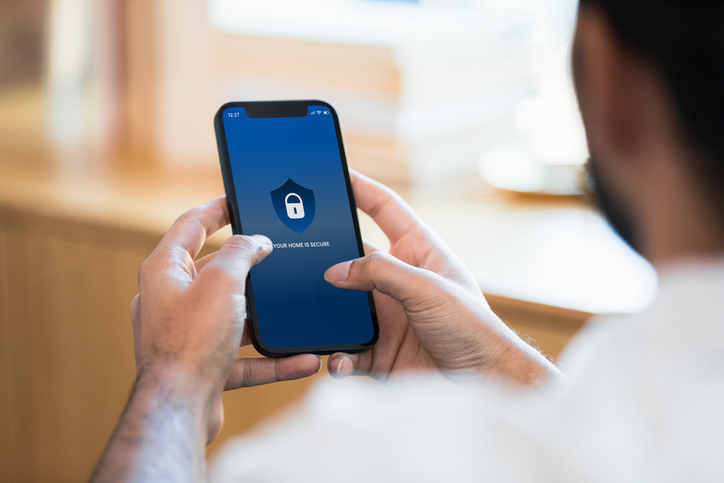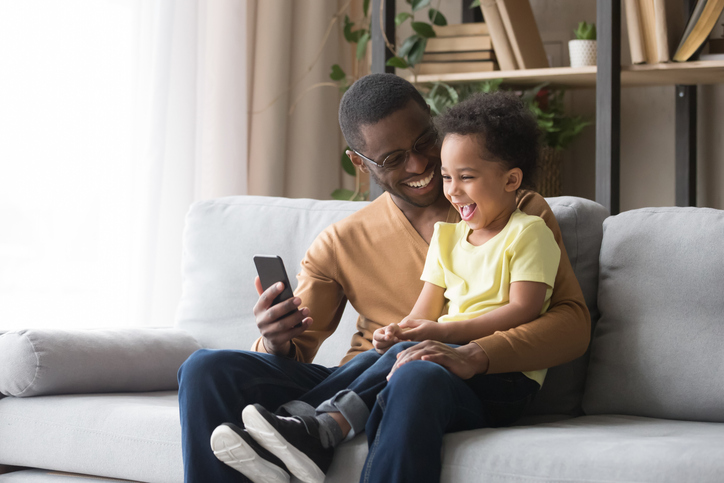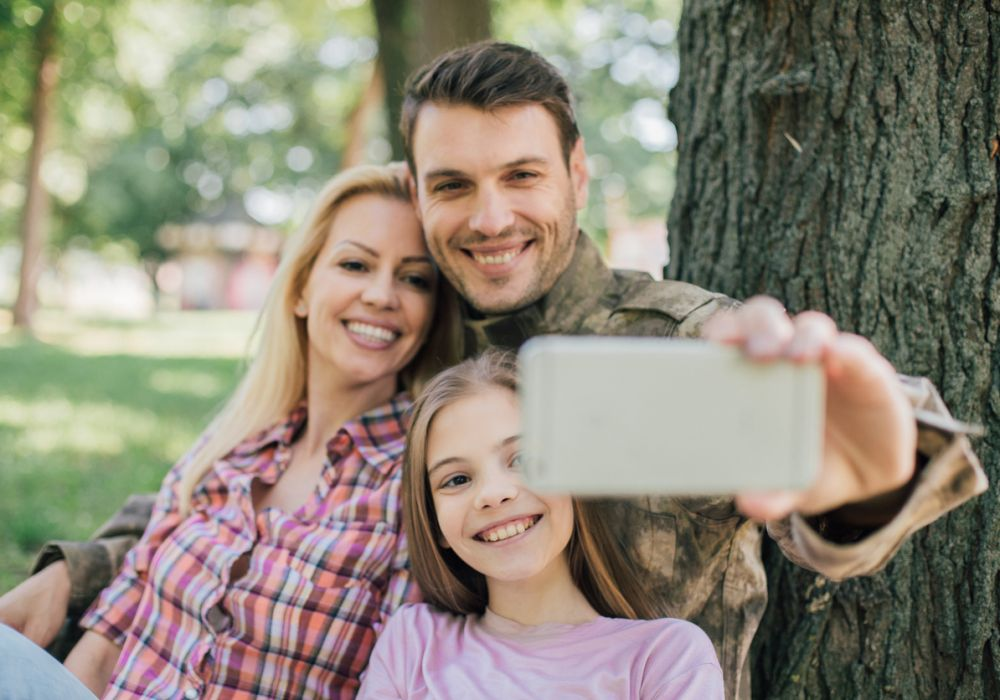How to Protect Your Digital Privacy

We text. We tweet. We pay bills and manage our financial accounts. We work. We game. We track our health. We check social media platforms. We plan vacations. Is there anything we don’t do on our smartphones? The accounts that we access via our mobile devices help us run our lives. That’s why protecting our online privacy and the theft of all the personal information you have stored on your cell has never been more important. Here are 7 ways to protect your privacy online.
1. Privacy online starts with strong passcodes for online accounts

Without a passcode, your privacy online can quickly become compromised, and you can easily become the victim of identity theft as anyone can access your information. So please, protect your online privacy and data by setting up a passcode for all your online accounts and please do not use: your phone number, your social security number, your birthday, your address, and never, ever use 1234.
Instead, mix numbers, letters, and special characters when you set up your password, and please, under no circumstances should you share it with anyone. In fact, consider using a password manager as password managers can generate very strong passwords in a split second and provide changes to weak passwords.
2. Don’t download just any old app

Sure, the app looks appealing, and you did just read something about it but, what do you really know about the company behind it? Will your information really be secure? Private? Err on the side of caution and protect your privacy online by downloading apps only from big name, official app stores like Amazon, iTunes, etc.
And when it comes to financial apps, be triply careful. If the app keeps requesting your financial information, ditch it.
3. That funky-looking link? Don’t click on it

Did you know that people are three times more likely to click on suspicious links on their cell phones than on a laptop or PC? It’s true. Most don't even stop to double check.
To protect your privacy online, if the link looks questionable or immediately asks for your personal or financial information, double check it before you click on it.
4. When you receive notice of a software update, make sure you install it

There’s really no excuse to ignore software updates. These can be set to download while you’re sleeping so it won’t interrupt your day. It also could save you from data breaches as those updates often patch privacy holes discovered since the previous update was released.
It’s crucial to have the latest solutions to protect internet privacy and your online privacy and the updates make it easy to get them.
5. Stay away from public Wi Fi networks and protect against identity theft

Sure, they’re convenient, but open Wi-Fi networks like you find at a library or coffee shop are equally as convenient for those eager to swipe your private information -- credit card and bank account numbers and personal data and passwords without you being aware of it. Better to skip the open WiFi than jeopardize your online data privacy.
6. Make note of your IMEI

Your IMEI (International Mobile Equipment Identity) number is a fifteen-digit number located in “settings” or on your mobile phone battery. It’s an excellent idea to write it down and keep it someplace safe. If your phone is lost or stolen, it can help speed up the process of getting your phone back to you. And the sooner you get it back, the better for protecting your online privacy.
7. Safeguard your Sim card

If you should decide to sell your phone, remove the SIM card prior to handing it over to the purchaser. The Sim card contains a wealth of private information that, in the hands of the wrong person, would wreak havoc with your online privacy. Same thing for any time you take your device to be repaired: remove the SIM card.
More good ways to protect your online privacy
Your can protect your online privacy and security even further by turning on two-factor authentication for important online accounts and setting passwords for your essential devices. Adjust your privacy and security settings for your most important accounts on social media sites like Facebook, Twitter, etc. If you don't have passwords set for all your devices and online activities, get them set up immediately. And make sure that, when you switch off your Android phone or iPhone, the device requires a password again in as short a time as possible (important for keeping info from prying eyes).
At Life Wireless we think it’s important to help you helping you safeguard your digital privacy. We also think it’s important to help you qualify for free wireless service.
It’s not difficult to qualify for free cellular service from Life Wireless, if you meet certain requirements, and it takes just a few minutes to complete the application.
A little background
Life Wireless offers government subsidized free cellular service through the Affordable Connectivity Program to qualifying individuals and families. And, if you’re unemployed or participate in a government benefit program such as SNAP, Medicaid, Federal Public Housing Assistance, SSI, or WIC, you already qualify for this federally funded free cellular service.
About the Affordable Connectivity Program (ACP)
As we mentioned above, the Affordable Connectivity Program (ACP) is a government benefit program operated by the Federal Communications Commission (FCC) that provides discounts on monthly broadband Internet access service. ACP benefits may be obtained from any participating provider of your choice including Life Wireless. Only one member of a household can participate in the program and the service cannot be transferred to another family member or individual.
Because many families struggle to afford cell phones and Internet access, both of which are vital to staying connected with their children’s schools, doctors, and employers, among others, the Federal Government offers ACP and another program called Lifeline. Using both doubles your connectivity!
About Lifeline
Lifeline is a federal program created to help qualified households pay for connectivity services such as wireless and internet plans. As with the Affordable Connectivity Program, only one member of a household can participate in the program and the service cannot be transferred to another family member or individual.
Examples of one household:
- A married couple that lives together
- A parent/guardian and child who live together
- An adult who lives with friends or family who financially support him/her
Each of these are one household and must share one benefit.
Examples of more than one household:
- Four roommates who live together but do not share money are four households. They can have one benefit each, for a total of four benefits.
- 30 seniors who live in an assisted-living home are 30 households. They can have one benefit each, for a total of 30 total benefits.
Each state has different eligibility requirements such as receiving government assistance or having a household income that is at or below the federal poverty level for the state in which you reside.
In general though, you are qualified to receive Lifeline if you participate in any of the programs listed here:
- Food Stamps or Supplemental Nutrition Assistance Program (SNAP)
- Medicaid (not Medicare)
- Supplemental Security Income (SSI)
- Section 8 Federal Public Housing Assistance (FPHA)
- Veteran's Pension or Survivor's Pension Benefit
Additionally, if you are a resident of a Federally-recognized Tribal land, you may qualify under the following programs:
- Food Distribution Program on Indian Reservations
- Bureau of Indian Affairs General Assistance
- Tribally Administered TANF
- Head Start (if you meet the income-qualifying standards)
Even if you’re paying just $20 a month for cell service, wouldn’t it be great to have that $240 to spend on groceries? If you apply for Lifeline and are approved, you’ll receive:
- FREE Unlimited Talk & Text
- FREE 15GB Data (+ more data for California residents)
- FREE Smartphone (or bring your own)
Pair Lifeline with the Affordable Connectivity Program (ACP) and DOUBLE your connectivity
If you’re approved for Lifeline and you sign up for the Affordable Connectivity Program (ACP), you get two sources of free talk, text, and unlimited data that you can split between two phones. That means free cell service for you and free cell service for someone you love. If your child has been asking for a cell phone, this is a terrific opportunity to provide him or her with talk, text, unlimited data and the ability to stay in touch with you!
Of course you don’t have to split the service between two phones, you can keep it all on one. But it’s a wonderful option if your spouse, child or relative needs a phone but has been unable to get one due to the expense.
Whichever option you choose – to keep the data on one phone or split it between two – Life Wireless will make sure you receive the free talk, text, and unlimited data to help you stay connected.
Option 1: Combine Your Data
Activate Lifeline and ACP on the same device and receive unlimited talk, text, and data, plus 5GB of mobile hotspot.
Option 2: Split Your Data
Split your data between two phones or supported devices and you’ll have one device with ACP’s free talk, text, and 6GB of data and a second device with Lifeline’s talk, text, and 4.5GB of data (6GB of data in California).
Additional, important, details
Life Wireless service is a prepaid service offered to those eligible for ACP discount benefits and those eligible for Lifeline benefits. To maintain your service and benefits, you need to:
- activate your service by calling someone,
- initiating data usage (by going on Facebook, for example), or
- by responding to instructions from Life Wireless to activate the service.
To keep your account active, you need to use the service at least once during any 30-day period by:
- calling someone,
- answering a call from someone other than Life Wireless,
- sending a text message,
- using cellular data (again, by going on Facebook or Amazon, for example),
- purchasing additional service from Life Wireless,
- or by responding to a direct contact from Life Wireless confirming that you want to continue receiving service from Life Wireless.
Should your service goes unused for 30 days, you will no longer be eligible for Lifeline benefits and your service may be suspended (allowing only 911 calls and calls to the Life Wireless's customer care center), and subject to a 15-day cure period during which you must use the service (as described above) in order to fully re-activate your service, keep your telephone number and remain enrolled in the ACP.
For questions about Life Wireless, visit our Contact Us page here. To enroll now, use the Life Wireless Online Enrollment form.
Fast facts about Life Wireless
Yes, you can add more minutes and data!
You can purchase additional minutes or data one of the following ways:
- Go to www.LifeWireless.com and click "Add Minutes/Data"
- If you have a smart phone, go to your MyLifeWireless app and click "Add Minutes".
- Call Customer Service at 1-888-543-3620, or by dialing 611 on your Life Wireless phone.
- You can also go to any Moneygram location and use Receive Code: 7924
Yes, you can track your minutes!
Your minutes replenish each month on your anniversary date before end of the day. For example if you signed up and received your minutes on the 12th of the month, your minutes will replenish every month on the 12th of the month.
You can check your account balance the following ways:
- Go to www.LifeWireless.com and click "My Account"
- Go to your MyLifeWireless app on your phone, and click "Check Balance"
- Call Customer Service at 1-888-543-3620, or by dialing 611 on your Life Wireless phone.
Yes, you can keep your current phone number!
If your application is approved, you have the option to keep your current phone number.
Once you receive your Life Wireless phone in the mail, call Life Wireless Customer Service at 1-888-543-3620 and a representative will assist you in keeping your current number. Make sure that you don't call from your Lifeline phone and have your account number and password from your previous carrier handy.
What our customers are saying:
"Life Wireless has been great. I have used it so many times for appointments and finding the proper care providers for my needs as well as for my family's needs. Thank you so much Life Wireless!"
Rebecca L., KY
“Without this phone I would be lost. It has helped me stay in contact with my daughter’s specialist. I schedule her appointments and they can call back if there are any complications with her results. Thank you, Life Wireless.” Amanda Z., PA
“I've been looking for apartments, doctor’s offices, and school phone numbers, and my data provided has been a tremendous help in gaining access to this information. I'm very grateful for this service.” Maria R. AZ
Don’t wait. Get FREE wireless service now!
Posted 1 year ago